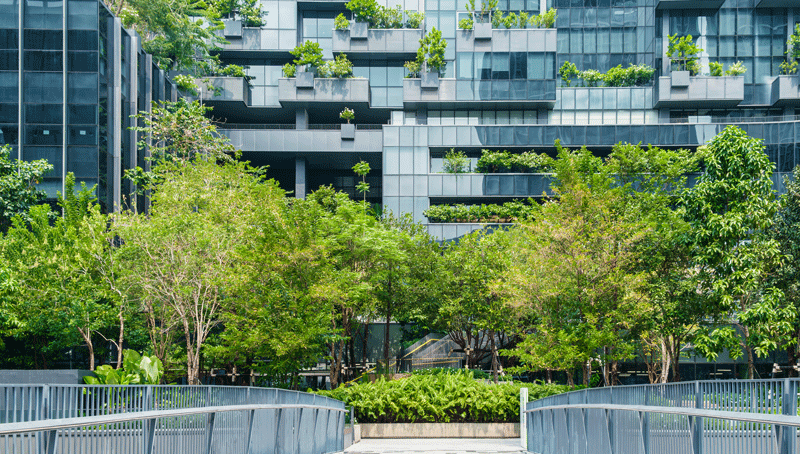By Joshua Neil
Copyright edie

This is welcome news for businesses currently navigating a challenging narrative in the race to decarbonise. Reports often emphasise the high cost of delivering net-zero, creating the impression that – from a financial standpoint at least – it is more burden than benefit. Yet, when it comes to buildings, the opposite is often true.
Through our work with clients around the globe, IES consistently sees how decarbonising the built environment can deliver measurable financial returns – often within a very short payback. And the benefits go far beyond lower energy bills, extending to resilience, wellbeing, and long-term business value too.
Why buildings are key to achieving net-zero affordably
We’ve all heard the well-known statistic that buildings are responsible for nearly 40% of global energy-related carbon emissions. However, they are also one of the largest overheads for businesses, making them a powerful lever in the net-zero transition.
The World Economic Forum estimates that buildings have the potential to reduce energy intensity by 38%, cutting global energy demand by 12%. That’s not just great news for the planet, but signals hope for businesses too, in the form of lower energy costs and greater resilience in the face of volatile energy markets.
Ensuring that new construction adheres to high-performance and net-zero building design standards can lock in efficiency, resilience, and cost savings from the outset. However, significant opportunities exist within our existing buildings too – whether this be through simple operational adjustments, or more in-depth retrofit interventions. And the benefits go beyond just energy savings. Building upgrades can reduce staff sickness by 20%, while creating 3.2 million jobs per year globally. These are not just environmental wins, but clear financial and social returns.
Payback periods that make business sense
A common myth is that net-zero requires decades of investment before returns materialise. While it is true that some interventions will be more difficult, and costly, to implement than others, there are many building interventions that can deliver a rapid payback on the path to net-zero.
Operational optimisation, for example, is a great way of uncovering hidden inefficiencies, which can amount to substantial savings. By leveraging energy modelling tools and live data to identify quick wins, we’ve seen organisations reduce their consumption by as much as 10-20% with very little upfront investment. In the current energy climate, this often results in a payback of fewer than 12 months, and that’s before even considering any ongoing savings that will continue to accumulate year-on-year. What’s more, these savings can help to free up funds for any deeper retrofit measures or renewable investments over time, to help take businesses closer to their net-zero goals, without breaking the bank.
Take the example of Tifco Hotel Group, Ireland’s second largest hotel operator. Through a series of energy audits, IES was able to help identify the potential for a 50% reduction in energy use, a 30% reduction in energy cost and a 43% reduction in CO2 emissions across their portfolio. Similarly, in developing a digital twin for the University of Liverpool, we were able to verify a 23% energy reduction and £25K cost savings in just nine months following a recent HVAC refurbishment. These savings continue to rise year-on-year, while the digital twin is helping to maintain optimum performance and inform better decision making across other buildings on campus, to help take them towards their decarbonisation goals.
And the returns don’t stop at energy savings. People working in green buildings experience over 25% higher cognitive performance and a 30% reduction in sickness. For businesses, that translates into greater productivity, reduced absenteeism, and stronger bottom-line performance.
Building resilience for the future
The benefits of decarbonising buildings also extend to resilience and delivering long-term value. Natural catastrophes already cost the global economy over $100bn annually. By investing in resilient, future-ready buildings, businesses can protect both their assets and their communities.
At the same time, financial incentives are helping to further build the business case for sustainability. McKinsey & Company research shows that companies with strong ESG performance enjoy a 10% lower cost of capital and are, on average, 20% more profitable. In other words, investing in ESG-aligned, net-zero buildings isn’t just ethical – it’s strategically sound.
By taking a whole-life carbon approach, underpinned by trusted data insights and energy modelling tools, businesses can ensure that the value of their assets is maintained over decades – future-proofing against regulatory changes, investor scrutiny, and societal expectations.
Turning climate action into a business advantage
This World Green Building Week, the message is clear – net-zero buildings are not a cost to be managed, but an opportunity to be seized. Operational upgrades often lead to immediate savings, green workplaces foster employee wellbeing and productivity, and future-ready designs protect businesses from climate risks and regulatory pressures. Aligning buildings with ESG strategies can also unlock better access to capital and strengthen long-term profitability.
By reframing net-zero as an investment rather than an expense, businesses can capture these opportunities and position themselves ahead of the curve. We have seen first hand that decarbonising buildings is not only achievable, but highly profitable – reducing energy demand, boosting resilience, and enhancing business value for decades to come.
For further insights and inspiration, hear from industry experts that are leading the race to zero-energy buildings in IES’s recent video series.



